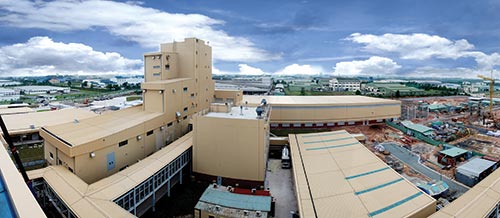Coping with the urban heat island

Cool roofing can make a huge difference to a building’s efficiency
The effectiveness of a single layer cool roof is based on a high Solar Reflectance Index (SRI).
So what are sri figures?
The Solar Reflectance Index (SRI) provides a measurement that designates a numerical expression of a roof’s overall ability to reflect solar heat.
Total solar reflectance (TSR) figures are expressed as a percentage falling between 0 and 100 per cent dependant on a roofing’s Total Solar Reflectance as tested to ASTM C-1549 or ASTM E-903 standard.
Emissivity (or Infrared emittance) is a measure of the ability of a surface to shed some of its heat in the form of infrared away from the surface. The results from tests based on the ASTM-C1371 standard express this emittance value as a percentage falling between 0 per cent and 100 per cent depending on the roofing’s performance.
The SRI combines both TSR percent reflectivity value and emittance value as a measure of a roof’s overall ability to reject solar heat.
The SRI calculation is done in accordance with ASTM E 1980-01. Very hot roofing can actually have a negative SRI value and a very cool roof can have a value greater than 100.
The website www.heatisland.lbl.gov provides an SRI calculator, a tool coded by Ronnen Levinson, from the Heat Island Group, Lawrence Berkeley National Laboratory.
We can see in the Table different roofing surface temperatures with the same conditions. The temperatures vary by up to 10-20 degrees Celcius between high SRI and low SRI roofing material.
So the roofing with the highest solar reflectance index (SRI) are the coolest choices for exterior roofing applications and are widely known as cool roofs.
Certain roofing material with solar reflectance technology will help designers grasp the power to shape the landscape to suit their architectural vision and create a future that is comfortable not just for people, but for the environment too.
For example Thermatech solar reflectance technology is incorporated into Clean Colorbond steel to lower surface temperature by absorbing less heat from the sun. In other words, Thermatech is able to reflect the solar heat of roofing material, and provide higher SRI values.
In moderate to hot climates, compared to roofing material of similar colour with lower solar reflectance, Clean Colorbond with Thermatech technology steel can reduce annual cooling energy consumption by up to 15 per cent and reduces peak roof temperature by up to 6 degrees Celcius, depending on the colour, type of roofing, insulation and design.
Using Clean Colorbond Thermatech steel as a cool roof for greater comfort while using less energy helps to reduce costs and is friendlier to the environment by helping to mitigate the urban heat island effect.
*Lam To Trinh is NS BlueScope Vietnam’s technical marketing manager
What the stars mean:
★ Poor ★ ★ Promising ★★★ Good ★★★★ Very good ★★★★★ Exceptional
Latest News
More News
- Going green to save a bundle (June 08, 2015 | 10:00)
- Green buildings: the rising trend (June 02, 2015 | 09:41)
- Green buildings – key to sustainable urban development in Vietnam (May 18, 2015 | 17:00)
- Feed-in tariffs continue to haunt green energy prospects (December 15, 2014 | 10:47)
- Building material types intrinsic to green ratings (December 09, 2014 | 11:56)
- Turning an eco- smart dream into reality (December 09, 2014 | 11:55)
- Green products enjoy a growing presence at Vietbuild Hanoi 2014 (December 01, 2014 | 10:06)
- Country profits from green building (November 24, 2014 | 11:02)
- Firms flout enviroment laws (November 17, 2014 | 10:48)
- Energy efficient sticks and carrots (November 10, 2014 | 15:30)


















 Mobile Version
Mobile Version